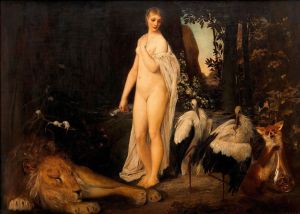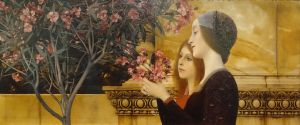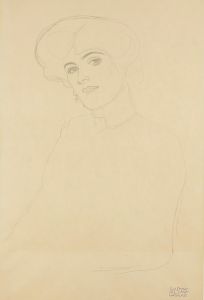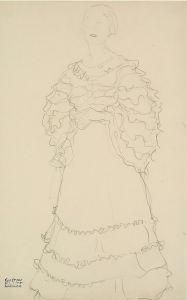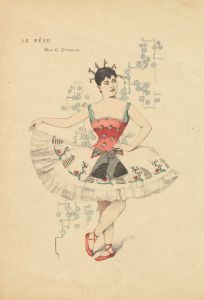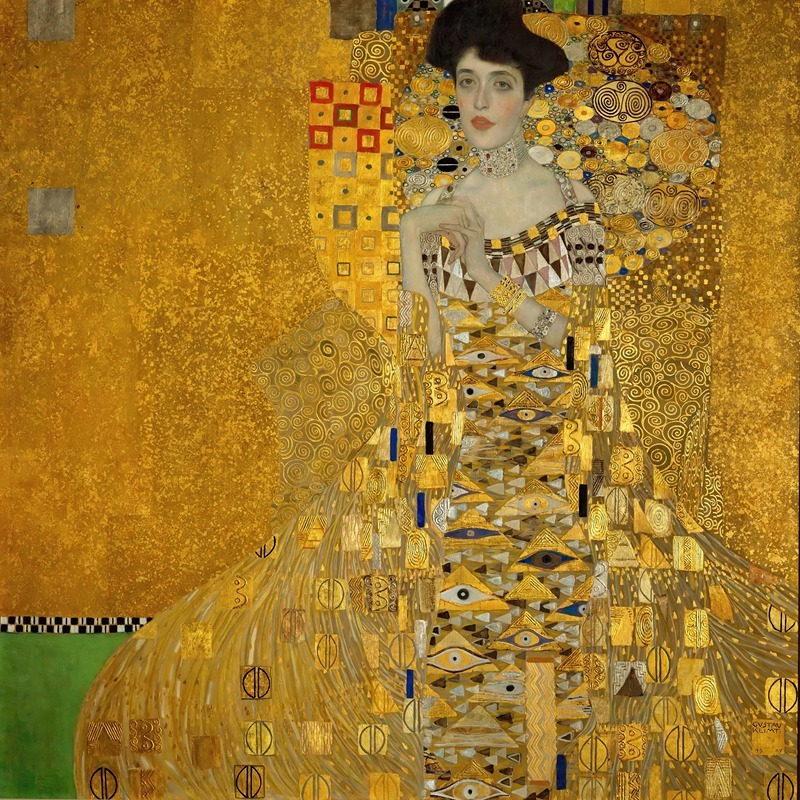
Portrait of Adele Bloch-Bauer I
A hand-painted replica of Gustav Klimt’s masterpiece Portrait of Adele Bloch-Bauer I, meticulously crafted by professional artists to capture the true essence of the original. Each piece is created with museum-quality canvas and rare mineral pigments, carefully painted by experienced artists with delicate brushstrokes and rich, layered colors to perfectly recreate the texture of the original artwork. Unlike machine-printed reproductions, this hand-painted version brings the painting to life, infused with the artist’s emotions and skill in every stroke. Whether for personal collection or home decoration, it instantly elevates the artistic atmosphere of any space.
"Portrait of Adele Bloch-Bauer I" is a painting by the Austrian artist Gustav Klimt, completed in 1907. It is one of Klimt's most famous works and a prime example of his "Golden Phase," during which he incorporated gold leaf into his paintings. The portrait depicts Adele Bloch-Bauer, a wealthy Viennese socialite and patron of the arts, who was the wife of Ferdinand Bloch-Bauer, a prominent industrialist.
The painting is notable for its opulent use of gold and intricate patterns, which are characteristic of Klimt's style during this period. The background and Adele's dress are adorned with elaborate, almost mosaic-like designs that include geometric shapes, spirals, and floral motifs. Her face and hands are rendered with a more naturalistic approach, creating a striking contrast with the decorative elements surrounding her.
Adele Bloch-Bauer was the only person Klimt painted twice, with the second portrait, "Portrait of Adele Bloch-Bauer II," completed in 1912. The first portrait, however, remains the more famous of the two. The painting measures 140 cm x 140 cm (55 inches x 55 inches) and is executed in oil, silver, and gold on canvas.
The history of the painting is as dramatic as its visual impact. During World War II, the Nazis confiscated the painting from the Bloch-Bauer family, along with other artworks and properties. After the war, the painting ended up in the Austrian State Gallery, where it remained for several decades.
In the late 1990s, Maria Altmann, the niece of Adele Bloch-Bauer, began a legal battle to reclaim the painting, arguing that it had been stolen by the Nazis and rightfully belonged to her family. The case garnered international attention and highlighted issues of art restitution and the legacy of Nazi looting. In 2006, after a lengthy legal process, the Austrian government returned the painting to Altmann and her family.
Shortly after its restitution, the painting was sold to Ronald Lauder for the Neue Galerie in New York City for a reported $135 million, making it one of the most expensive paintings ever sold at the time. It is now a centerpiece of the museum's collection, where it continues to attract visitors from around the world.
"Portrait of Adele Bloch-Bauer I" is not only a masterpiece of early 20th-century art but also a symbol of the complex history of art ownership and restitution. Its journey from Klimt's studio to its current home in New York reflects broader historical narratives, including the impact of World War II on cultural heritage and the ongoing efforts to address the injustices of the past.








